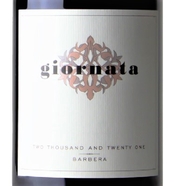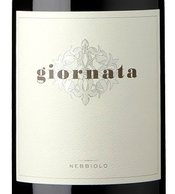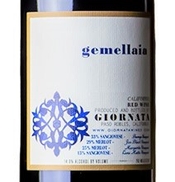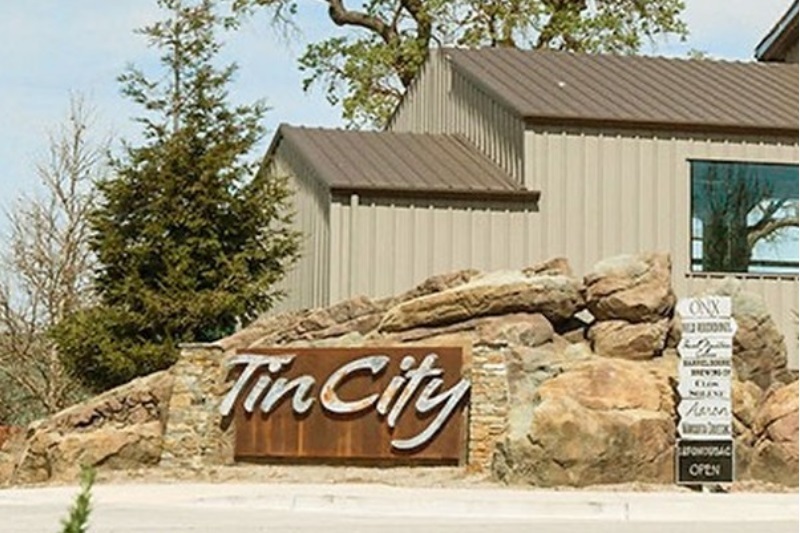Topping my To-Do list over the last two years has been to visit and explore Tin City. So, after a few last-minute changes in recent travel plans, I finally made it. Although I researched it in advance, it was not at all what I had expected. In fact, Tin City is simply amazing, an original, creative concept enabling small wineries to get established and allowing winemakers who think “outside the box” a real opportunity to pursue their dreams. Best of all, either can be done without shelling out mega millions.For those unfamiliar with it, Tin City is in an industrial area southeast of downtown Paso Robles. With train tracks running along its eastern edge, it began around 2005 and is now home to 25 wineries, a brewery, a distiller, cider works and a market. Tin City is not your typical urban winery circuit, however. It is not the same concept as Santa Barbara’s sprawling “Funk Zone,” with its converted warehouses found along a ten block trail. And it is unlike those wineries clustered in downtown Napa, along the Sonoma Plaza, or Walla Walla, all with tasting rooms lining their main streets.
Tin City started from scratch. It is the wine world’s take on, “If you build it, they will come.” And it is home to small wineries actually making wines on site. That’s correct, these wineries are crushing, processing, and bottling their wines in the area behind their tasting rooms. And they all appear to have forklifts which were quite active during my visit.
Making beer on site, the brewery was the first to settle in and it has been a popular destination with live music and special events ever since.
Tiny City was the brainstorm of Mike English, a builder by trade specializing in swimming pools who simply, “wanted to create a wine and food village of like-minded people.” His first tenant selected was the BarrelHouse Brewery. After a few interviews, he went with BarrelHouse as his anchor because he felt artisan beer would appeal to a wide and non-snobby audience. Making beer on site, the brewery has been a popular destination.
Soon thereafter, the concept of onsite, small artisan crafting began to take shape. If you want more background, there’s a documentary produced a few years ago. It documents that the Tin City wineries are involved in all of the messy winemaking stages. The amazing part is that somehow winery owners were able to work through the planning department and cut through the red tape and impact studies required in other wine regions.
One person interviewed in the documentary explains that Tin City’s wineries are owned and operated by “career changers and cellar rats.” My introduction to the wines coming out of Tin City was through Desparada, the creation of Vailia From, owner and winemaker. Described by some as a “rebel winemaker” and “free spirit,” she is definitely unconventional, but also wonderfully creative.
Here’s her background: “I’ve seen every side of the industry, from winemaking to harvesting, to importing, cold calling for sales, to managing brokerages, to working on restaurant floors, and managing a mobile bottling line. There’s something in wine that kept me going. I’m a traveler by nature, and Desparada is what carries me.”
She made one experimental barrel in 2008, and then made her first commercial wines at Tin City in 2009.
She likely designed the label artwork, and prefers giving her wines proprietary names like “Soothsayer” and “Sackcloth & Ashes,” for a Bordeaux blend. Three separate Sauvignon Blancs are made, again bearing special names. My first Desparada wine was the 2018 “Fragment” Sauvignon Blanc, which won me over with its ripe, expansive aroma, and leesy, slightly oaked and herbal personality. The name Desparada is a play on a female outlaw type. Yes, she is unusual. Here are her tasting notes for Soothsayer: “Calcareous acid trip, mezcal spanked blueberries, fire-roasted poblanos with crème fraîche, country club ashtray, three-legged cat, first date jitters.”
She completed her bio with this note: “I spent two years living in a 1977 Royal International trailer on Pine Hawk Vineyard, where the idea of Desparada was born. I make my own deodorant.”
That says it all.
Another wine from Tin City that caught my attention about a year ago was from Nicora. Focusing on small batch Rhône-style wines, winemaker Nick Elliott works with vineyards on Paso’s Westside, and his lineup today consists of an excellent Viognier from Denner Vineyard, 3 single vineyard Syrahs, and a GSM. His 2018, 65% Grenache, 30% Syrah and 5% Mourvedre, is a personal favorite. My review of that wine noted, “It offers plum, leather and spice aromatics in a smooth, savory medium bodied package. It comes across as delicious and seamless, with light tannins. More nuanced and layered than ripe and jammy. Enjoy now and over the next few years.”
Elliott comes across in his bio as the ultimate “cellar rat” working his way up, willing to do everything himself to learn the winemaking process from start to finish. All that one needed to know to run a small winery. Here is how he introduces the winery: “Nicora was started with little resources, and has been built from the ground up. It truly began in the cellar, where I learned from mentors such as Scott Hawley (Torrin), Eric Jensen (Booker), and Bob Tillman (Alta Colina). I worked for the funds to buy grapes and barrels, and spent many hours with purple hands and wet boots. My dream was to hand craft wines that would be both a personal expression and a reflection of the unique vineyards found within Paso Robles, and beyond.”
Syrah and Rhône-style wines are, of course, central to the Paso winescape, but in Tin City, you encounter those who go their own way. That leads me to Giornata Winery, my most recent discovery…and what a story it comes with. Owned by Stephanie and Brian Terrizzi, this winery makes nothing but wines from Italian varieties from vineyards in and around Paso.
Now, before you think that’s crazy, some of us remember that in the 1990s there was a mini trend underway in all parts of California in a movement dubbed “Cal-Ital,” which had dozens of wineries working with Barbera and a range of Italian wines. It fizzled, but that doesn’t mean it was a bad idea. Just bad timing.
Giornata focuses on more than Barbera and Sangiovese. The Italian varieties they work with include Sangiovese, Aglianico, Barbera, Vermentino, Fiano, Ramato, Gemellaia, and Nebbiolo. Brian’s first vintage was one barrel of Nebbiolo made in the shed in his yard in Fresno.
Today, Brian Terrizzi makes wine from sites farmed by his wife Stephanie. They met at Fresno State where he was enrolled in enology, she in viticulture. One of her research projects was clones of Nebbiolo. She is also a vineyard manager where she gets to work with Nebbiolo, the winery’s flagship wine. She has done a lot of studies on physical ripeness, Brian explains. “When it comes to vinification, ‘when to pick’ is the biggest decision that we make. We want the purity of Nebbiolo. Picking at the right time, when there is still acidity and that varietal character is essential for us.” What’s key in the Terrizzi’s approach is their attention to the specifics of the variety.
In 2012, Giornata moved to Tin City into their own facility right next to Field Recordings. “There were no winery signs and only a couple visitors a month,” Brian remembers. Before then, they had moved production around, and earlier had developed the Broadside Winery in Paso. Eventually he sold his share in Broadside to focus on Giornata.
During 2022, Giornata will release around 20 wines. Production ranges from only 35 cases for some handmade wines to 500 cases per varietal. The total annual production will remain in the range of 4,000 to 5,000 cases per year. Among the early proponents of amphora in winemaking, the winery offers several “Orange Wines.”
I was lucky to make my way through quite a few wines during my visit, though not 20. I’ve singled out a few for a detailed review. By the time the Aglianico appeared, I decided to just enjoy the wine without writing notes. The Aglianico French Camp Vineyard in Paso Robles is one of two bottlings of this rare varietal that Giornata produces. This is their cooler site, as the vines sit at 1600 feet of elevation. The grapes were originally planted for one of Bonny Doon’s bottlings and only four-tenths of a hectare remains of Aglianico in this vineyard.
I drove away with respect for the way the entire roster consists of wines to be ideal food companions, not hedonistic, high scoring super stars. Even the Sangiovese Rosé was a surprising, snappy rendition that would show best with food. It is bottled under the “Etto” label, which is also the name of a line of handmade pasta sold at the Tin City market.
I can’t wait to return to Tin City, maybe to check out the wines from Sans Liege or Brian Benson, or all of the others. And then again, hand-made ice cream from Negranti Creamery looked good too.
Anyone contemplating a visit should set aside at least 3 days. Here are 4 good reasons to include a stop at Giornata.
 Giornata (El Pomar District – Paso Robles) Barbera 2021, $25: A relatively cool AVA, El Pomar, which benefits from the Templeton Gap’s marine air influence, contains about 2,000 acres of vines, mostly red varieties. Giornata offers one of the few Barberas from the district and has the food-friendly, Piedmontese-style in mind. The winemaker’s goal is to make “a light-bodied wine that is at once pleasurable but also intriguing.” Stainless steel fermented and aged in neutral French and Slovenian oak, the wine is bottled a few months after harvest. Very dark in color and medium-bodied, it emphasizes bright berry fruit with light spices in the background. On the palate it delivers assertive black cherry and strawberry flavors and remains highly energized in its flavors and finish thanks to persistent acidity. With little evidence of tannin or oak, it begs to be paired with hearty main courses. 352 cases made. 90
Giornata (El Pomar District – Paso Robles) Barbera 2021, $25: A relatively cool AVA, El Pomar, which benefits from the Templeton Gap’s marine air influence, contains about 2,000 acres of vines, mostly red varieties. Giornata offers one of the few Barberas from the district and has the food-friendly, Piedmontese-style in mind. The winemaker’s goal is to make “a light-bodied wine that is at once pleasurable but also intriguing.” Stainless steel fermented and aged in neutral French and Slovenian oak, the wine is bottled a few months after harvest. Very dark in color and medium-bodied, it emphasizes bright berry fruit with light spices in the background. On the palate it delivers assertive black cherry and strawberry flavors and remains highly energized in its flavors and finish thanks to persistent acidity. With little evidence of tannin or oak, it begs to be paired with hearty main courses. 352 cases made. 90
 Giornata (Adelaida District – Paso Robles) Nebbiolo 2019 $50: Located in the northwestern corner of Paso, Adelaida was “discovered” in the 1970s and singled out for its rolling hills and calcareous, limestone soils. Early on it seemed suited to Pinot Noir, but today Its reputation rests with the success of both Bordeaux and Rhône varieties. Nowadays Giornata is making a strong case for Italian grapes. Nebbiolo was the winery’s debut wine in 2005 and the learning curve has been steady. This 2019 is sleek and impressive. Fermented with native yeasts, it was aged for two years in neutral oak. It was also given a lengthy post-fermentation maceration on its skins. As it opens in the glass, this wine shows dark fruit and licorice aromas with a touch of leather. Medium bodied, it remains lively on the palate and has cherry fruit, light chalky tannins and definite acidity. Overall, it is youthfully tight but beautifully balanced. 94
Giornata (Adelaida District – Paso Robles) Nebbiolo 2019 $50: Located in the northwestern corner of Paso, Adelaida was “discovered” in the 1970s and singled out for its rolling hills and calcareous, limestone soils. Early on it seemed suited to Pinot Noir, but today Its reputation rests with the success of both Bordeaux and Rhône varieties. Nowadays Giornata is making a strong case for Italian grapes. Nebbiolo was the winery’s debut wine in 2005 and the learning curve has been steady. This 2019 is sleek and impressive. Fermented with native yeasts, it was aged for two years in neutral oak. It was also given a lengthy post-fermentation maceration on its skins. As it opens in the glass, this wine shows dark fruit and licorice aromas with a touch of leather. Medium bodied, it remains lively on the palate and has cherry fruit, light chalky tannins and definite acidity. Overall, it is youthfully tight but beautifully balanced. 94
 Giornata (Adelaida District – Paso Robles) Sangiovese 2019, $40: Relying on the Brunello clone, Giornata’s Sangiovese is aged 22 months in neutral French oak and keeps its focus on the grape’s vitality. The winemaker remarks that “Foot-stomping and extended maceration facilitate the gentle extraction of color and tannin from the small-berried Sangiovese clones that comprise this lot.” Its color is a dark garnet, and the aroma is a charming mix of ripe black fruit, tea leaf and dried herbs. On the plate it comes alive with fresh strawberry and savory fruit flavors and the texture is plush. With some tannin poking through in the finish, it remains bright with its balancing acidity. Its lingering finish gets you thinking about food companions. 92
Giornata (Adelaida District – Paso Robles) Sangiovese 2019, $40: Relying on the Brunello clone, Giornata’s Sangiovese is aged 22 months in neutral French oak and keeps its focus on the grape’s vitality. The winemaker remarks that “Foot-stomping and extended maceration facilitate the gentle extraction of color and tannin from the small-berried Sangiovese clones that comprise this lot.” Its color is a dark garnet, and the aroma is a charming mix of ripe black fruit, tea leaf and dried herbs. On the plate it comes alive with fresh strawberry and savory fruit flavors and the texture is plush. With some tannin poking through in the finish, it remains bright with its balancing acidity. Its lingering finish gets you thinking about food companions. 92
 Giornata Wines (Paso Robles) “Gemellaia” 2019, $65: A “Super Tuscan”-style blend, “Gemellaia” brings together 64% Sangiovese from the Adelaida District with 30% Merlot from Paso’s Santa Margarita District and a splash of Petit Verdot, also from Santa Margarita. Aging was in French oak, 50% new. The Merlot portion “undergoes lengthy extended macerations to refine tannins.” With a hint of violets, the aroma shows lots of black plum fruit and baking spice. On the palate the wine’s texture is rich and smooth with flavors of spice, light oak and a little earthy/gamey. Balanced and ready to enjoy now, it has the depth to age well for several years. 211 cases produced. 93
Giornata Wines (Paso Robles) “Gemellaia” 2019, $65: A “Super Tuscan”-style blend, “Gemellaia” brings together 64% Sangiovese from the Adelaida District with 30% Merlot from Paso’s Santa Margarita District and a splash of Petit Verdot, also from Santa Margarita. Aging was in French oak, 50% new. The Merlot portion “undergoes lengthy extended macerations to refine tannins.” With a hint of violets, the aroma shows lots of black plum fruit and baking spice. On the palate the wine’s texture is rich and smooth with flavors of spice, light oak and a little earthy/gamey. Balanced and ready to enjoy now, it has the depth to age well for several years. 211 cases produced. 93

